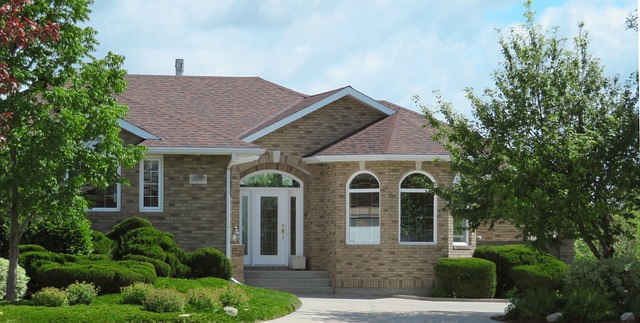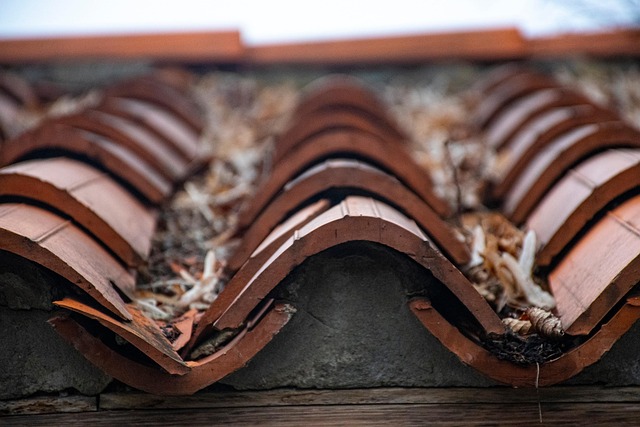When considering a roof replacement, assess your current roofing material, its condition, and lifespan. Regular inspections identify issues early, guiding material and cost decisions between asphalt or metal roofs. Timely replacements enhance energy efficiency, protect structural integrity, and prevent costly repairs. Choose cost-effective materials like affordable asphalt or durable metal, balancing quality and savings. Select reputable contractors through recommendations, online reviews, and experience with your roof type. For complex replacements, hire professionals for safety and code compliance. Use energy-efficient materials to lower utility bills and explore tax incentives. Regular maintenance extends the lifespan of your new roof, preventing costly mistakes.
Roof replacements are a significant investment, but understanding your options can make the process more manageable. This comprehensive guide explores affordable roof replacement for homes, from identifying common issues with different roofing types to choosing budget-friendly materials and finding reliable contractors. We’ll also delve into energy efficiency benefits, tax incentives, maintenance tips, and how to avoid costly mistakes, ensuring you make informed decisions for a durable, cost-effective new roof.
Understanding Your Roof: Types and Common Issues

Understanding your home’s roof is a crucial first step in considering a roof replacement. Different roofing materials—like asphalt, metal, or tile—come with varying lifespans and costs, so knowing what you have now can guide your decision-making process. Regular inspection will help identify common issues such as leaks, missing or damaged shingles, or structural weaknesses caused by age or severe weather conditions.
Asper to the type of roof and its condition, you’ll determine the scope and cost of the replacement project. For instance, while asphalt roofs are widely used due to their affordability and ease of maintenance, metal roofs offer a longer lifespan and enhanced resistance to extreme weather but come at a higher upfront cost. Identifying problems early through routine checks can prevent costly repairs or complete replacements down the line, making it easier to budget for roof replacement when needed.
The Benefits of Early Roof Replacement

Early roof replacement offers a multitude of advantages for homeowners. One of the most significant benefits is peace of mind. Regularly inspecting and replacing your roof as needed can prevent costly repairs or complete roof failures caused by damage from weather events, aging, or neglect. By staying proactive, you protect your home’s structural integrity and avoid unexpected, often expensive, surprises.
Additionally, timely roof replacement can significantly enhance the energy efficiency of your home. Older roofs can develop leaks, allowing conditioned air to escape, leading to higher energy bills. A new roof, especially when installed with modern materials designed for reflective properties, can improve insulation, reduce heating and cooling costs, and create a more comfortable living environment.
Budget-Friendly Materials for Roof Replacement

When considering a roof replacement, homeowners often look for ways to keep costs down without compromising quality. One of the best strategies is to choose budget-friendly materials that offer excellent durability and aesthetics. Asphalt shingles remain one of the most popular and affordable options on the market. They are easy to install, highly resistant to wear and tear, and can mimic the look of more expensive materials like slate or ceramic tile.
Beyond asphalt, metal roofing has gained traction as a cost-effective alternative. Metal panels are known for their longevity, reflecting heat to reduce energy costs, and their ability to withstand harsh weather conditions. While the upfront investment might be higher, metal roofs can last for decades with minimal maintenance, making them a sound long-term choice for those looking to save on future repairs and replacements.
Finding Reliable and Cost-Effective Contractors

When considering a roof replacement, finding reliable and cost-effective contractors is paramount. Start by requesting recommendations from friends or neighbours who have recently undertaken similar projects. Online reviews and ratings are also invaluable resources; websites like Angi or HomeAdvisor aggregate feedback from customers, helping you gauge a contractor’s reputation and work quality. Look for professionals with experience in your specific type of roof, as specialized knowledge ensures a more precise and efficient installation.
Additionally, get multiple quotes to compare pricing. Don’t be swayed solely by the lowest quote; instead, focus on finding a balance between cost and quality. Inquire about warranties, both for the materials and the workmanship, as these provide peace of mind and can save on future repairs. Reputable contractors will be happy to discuss options openly, offering transparent pricing structures that align with your budget while ensuring your roof is replaced to industry standards.
DIY vs Professional: When to Choose Each

When considering a roof replacement, one of the most important decisions homeowners face is whether to tackle the project themselves or hire professionals. For minor repairs and simple installations, DIY enthusiasts might find it feasible and cost-effective to take on the task independently. This can be appealing due to the potential savings and the sense of accomplishment that comes with completing a job yourself. Online tutorials and readily available resources make many tasks more accessible than ever before.
However, for larger or complex roof replacements, enlisting professional help is often the safer and more practical choice. Licensed roofing contractors bring expertise, specialized equipment, and insurance to ensure the job is done correctly and safely. They can provide valuable insights into local building codes and weatherproofing best practices, ensuring your new roof stands the test of time. While professional services may come at a higher cost initially, they often prevent future damage and costly repairs, making them a sound investment in the long run.
Energy Efficiency and Tax Incentives for New Roofs

When considering a roof replacement, homeowners can significantly benefit from the energy efficiency and tax incentives that come with installing new roofs. Energy-efficient roofing materials play a crucial role in reducing utility bills and minimizing environmental impact. Modern options like reflective shingles or metal roofing not only withstand harsh weather conditions but also reflect sunlight, keeping homes cooler during hot summers.
Additionally, many governments offer tax incentives for energy-efficient home improvements, including roof replacements. These incentives can significantly reduce the overall cost of a new roof, making it an affordable and smart investment. Homeowners should check local programs and regulations to take advantage of these benefits, further enhancing the financial viability of roof replacement projects.
Longevity and Maintenance Tips for Lasting Roofs

When considering a roof replacement, one of the most important factors to keep in mind is longevity. Investing in high-quality materials and choosing experienced professionals can significantly extend the lifespan of your new roof. Regular maintenance plays a crucial role too; scheduling annual inspections helps identify potential issues early on. Repairs should be addressed promptly to prevent minor problems from escalating into costly damages.
To ensure your roof lasts, consider routine cleaning to remove debris and maintain proper drainage. Inspect for loose or damaged shingles and address them immediately. Keeping an eye on the overall structure, including flashing and vents, ensures optimal performance. With the right care, a new roof can provide years of protection against the elements, offering peace of mind and saving you from frequent repairs—a smart move in terms of long-term cost savings for any homeowner considering roof replacement.
Common Mistakes to Avoid During the Replacement Process

When undertaking a roof replacement, many homeowners fall into common traps that can lead to costly mistakes. One of the biggest blunders is ignoring the quality of materials used. Opting for the cheapest options available might save some money in the short term, but it could result in a leaky roof and further damage down the line. It’s crucial to balance cost with durability and longevity, ensuring materials meet industry standards.
Another error is overlooking proper preparation and planning. Rush jobs often leave underlying issues unaddressed, leading to more extensive repairs later. Adequate time should be dedicated to assessing the current roof structure, understanding local building codes, and choosing a suitable replacement method. Skimping on professional consultations can also prove detrimental, as experts can provide invaluable insights tailored to your home’s unique needs.
